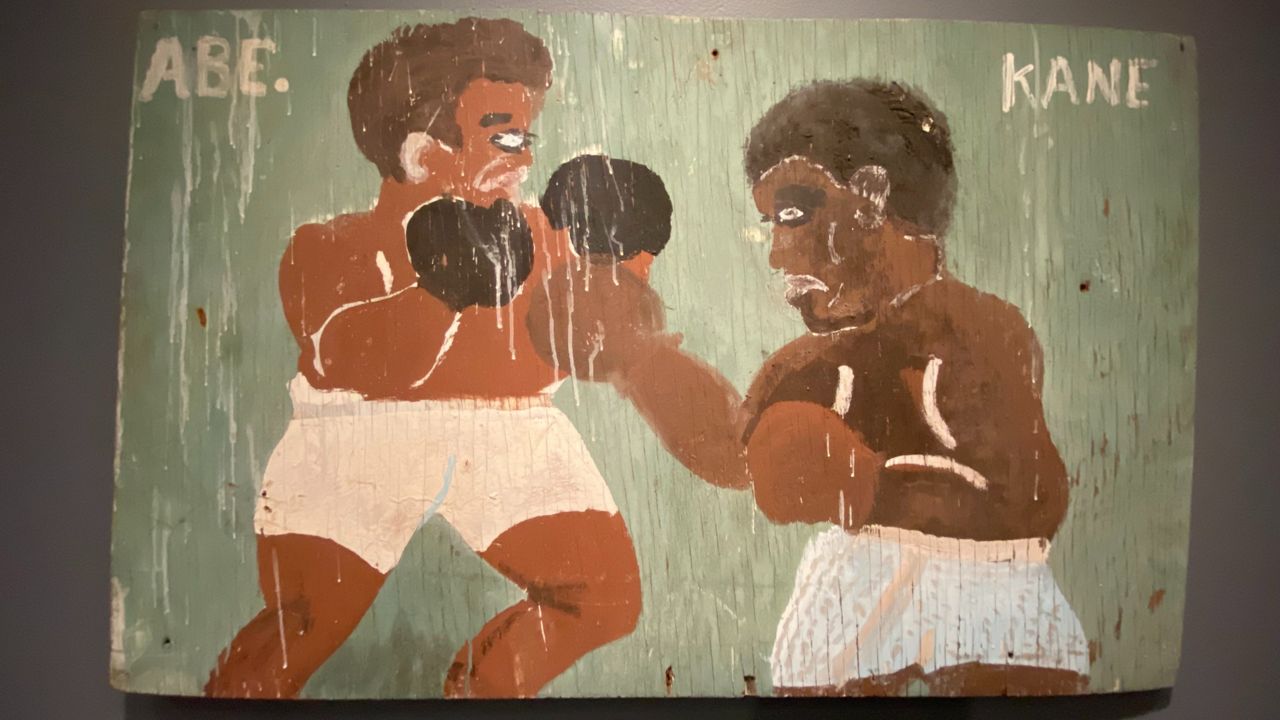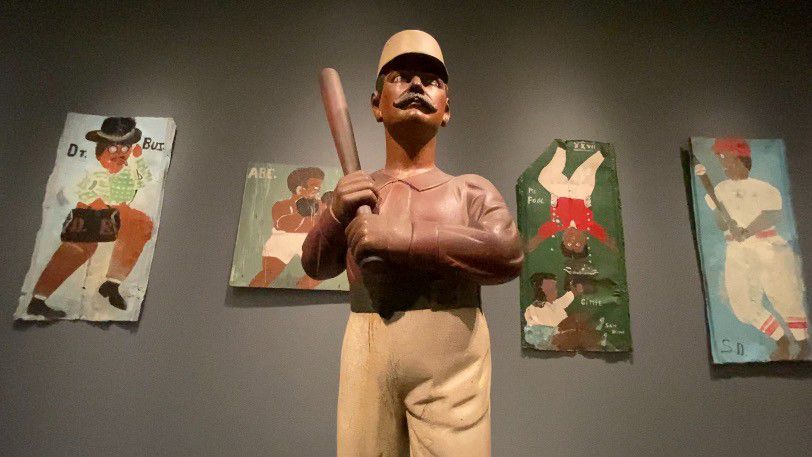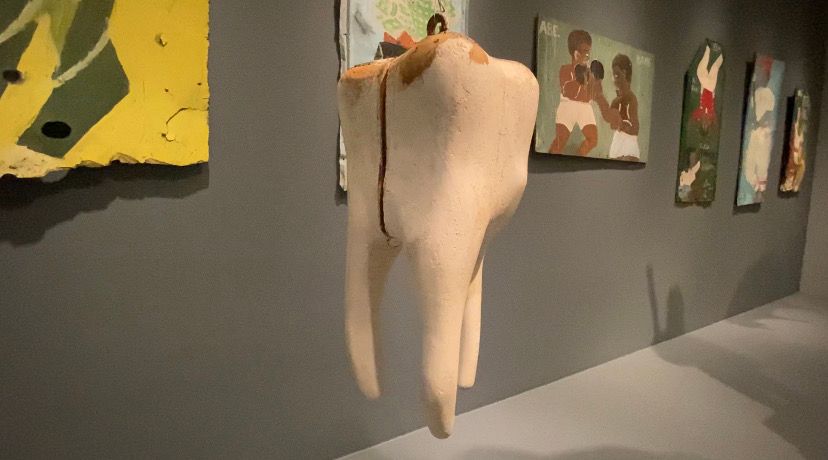A limestone sculpture called "Martha and Mary," based on the biblical story, was completed in the 1930s by noted self-taught sculptor William Edmonson.
How it arrived at the American Folk Art Museum on the Upper West Side has quite the story of its own. It was spotted in Missouri three years ago, beginning its journey to the museum.
What You Need To Know
- The American Folk Art Museum is located on the Upper West Side, on Columbus Avenue between West 65th and West 66th streets
- The museum is celebrating its 60th anniversary with a new exhibition called "Multitudes"
- The exhibition includes more than 400 items from the museum's collection, including some that are on view to the public for the first time
- Folk art is best defined as art made by people who are self-taught and have not received any formal artistic training
"A friend of the museum, John Foster, who is a collector and art historian, was driving around St. Louis and he spotted it from his car," said Christopher Gorman, the museum's deputy director and chief communications officer.
Foster pulled over, knocked on the door and spoke to the woman who lived in the home. "He said, 'I'm pretty sure that is a William Edmonson,' which was literally sitting on her front lawn, and had been there for about 30 years," Gorman said.

The sculpture was purchased and gifted to the museum by artist Brian Donnelly, known as KAWS, who is a Board of Trustees member. It's part of a new exhibition celebrating the museum's 60th anniversary called "Multitudes."
The cultural institution on Columbus Avenue, between West 65th and West 66th streets, is New York's only museum focused on folk art.

"Folk artists typically are either self-taught, so individuals who decided on their own that they wanted to paint, that they wanted to draw, they wanted to sculpt, [or] folk art is often community taught, so traditions that are passed down from a parent to a child, from a neighbor to a neighbor, a relative to a relative," Gorman said.
Among the more than 400 works on view are quilts, embroidery, shop signs like a giant tooth from a dentist's office, and even some whimsy bottles, ships in a bottles and beyond. The museum does not charge admission, supported by the generosity of donors, as well as through grants and its gift shop. The museum has come a long way since it was first conceived in the early 1960s.

"Collectors and curators thought of this as a truly American art form," Gorman said. "It has grown to be pretty international, and in fact, there are works of art on view here that are not from the United States, but are from elsewhere."
To plan a visit or find out about the museum's virtual programming, visit its website.






_PKG_Maybe_Happy_Ending_CG)
_PKG_OS_Picks_022825_CG-1)
_PKG_OS_Picks_022125_CLEAN)
